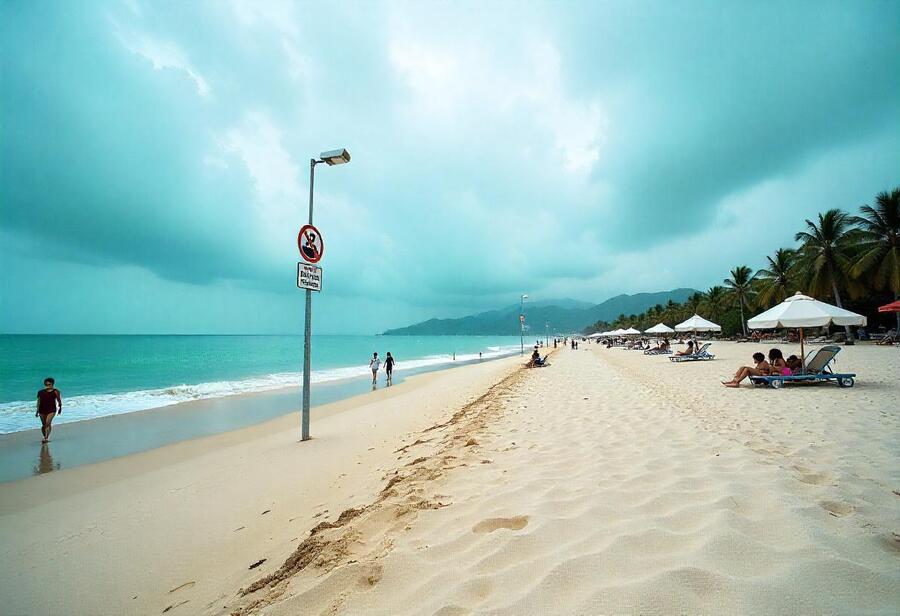Is it safe to travel to Iceland? Latest advice after volcano eruption
On the evening of March 16 a volcano erupted in Iceland’s Reykjanes peninsula for the fourth time since December 2023. The Icelandic Met Office reported that while lava has reached the town of Grindavik, which has been evacuated, the flow has since slowed substantially. The UK Foreign Office updated its travel advice following the latest eruption to warn tourists to stay away from Grindavik and stated that while the likelihood of further eruptions in this location remains high, the rest of the country is not affected. If you’re planning a trip to Iceland soon, here’s what you need to know.

Lava from the eruption near Grindavik on February 8
GETTY IMAGES
What’s the current situation in Grindavik?
The UK Foreign Office has warned tourists to stay away from Grindavik, the nearest town to the volcano. Grindavik has been evacuated and all roads to both the town and the surrounding areas are closed.

Is it safe to travel to Iceland right now?
It’s not safe to visit either the site of the volcano or the town of Grindavik, but the rest of the country, including the capital, Reykjavik, remains safe to visit.

Lava flows near Grindavik in January
GETTY IMAGES
What is the Foreign Office travel advice?
The Foreign Office updated its advice on March 16. It says: “Iceland is volcanic and seismically active. Recently there have been a series of volcanic eruptions on the Reykjanes peninsula in southwest Iceland, the latest occurring on 16 March. These have affected the town of Grindavik and area to the north of it. All roads to Grindavik and the surrounding area are closed and you should stay away from this area. Keflavik international airport and the road to it is unaffected and operating normally. The capital city, Reykjavik, and the rest of Iceland is not impacted by the eruptions. The likelihood of further eruptions in this location remains high. You should monitor local media for updates and follow the authorities’ advice on travel to the area.”

Smoke from an eruption in January rises on the outskirts of Grindavik
GETTY IMAGES
Where is the volcano in Iceland?
The volcano is by Hagafell on the Reykjanes peninsula in southwestern Iceland, around two miles from Grindavik. The latter is around 35 miles southwest of the capital, Reykjavik, and 16 miles from the international airport. It’s close to the Blue Lagoon, one of Iceland’s most popular tourist attractions.

Bathers at the Blue Lagoon
ALAMY
Is the Blue Lagoon closed?
The Blue Lagoon and its restaurants, café and spa were evacuated on March 16 and will remain closed until March 19. It stated “Despite these recent events, all our facilities remain in good condition and are surrounded by protective barriers designed to safeguard Blue Lagoon’s vital infrastructure against potential lava flows.”
Are flights to Iceland cancelled?
All flights to and from Iceland are currently operating as usual.
The Eyjafjallajokull eruption in 2010 resulted in the largest air traffic shutdown since the Second World War, with millions of passengers stranded across the world. This is because volcanic ash, if ingested in sufficient quantities, can lead to engine failure and persistent northerly winds were carrying large plumes of ash across Europe.
Following the Eyjafjallajokull eruption, the European Union Aviation Safety Agency says it is now better prepared for future major volcanic ash events and is monitoring the current situation. It states: “In the event of an eruption and development of an ash cloud, the agency will work with other aviation actors to assess the impact for aviation and make recommendations accordingly.”
Has Reykjavik been affected by the volcano?
The city has not been affected by the volcano eruption and, according to the Foreign Office’s advice, remains safe to visit.
• Best Iceland tours
• Best hotels in Iceland
Additional reporting by Qin Xie and Lizzie Frainier
Sign up to the Times Travel newsletter for weekly inspiration, advice and deals here.
link




:max_bytes(150000):strip_icc()/Calculator-App-Conversions-FT-BLOG0625-01-9522fe163eb24d31a5a7742009a50109.jpg)